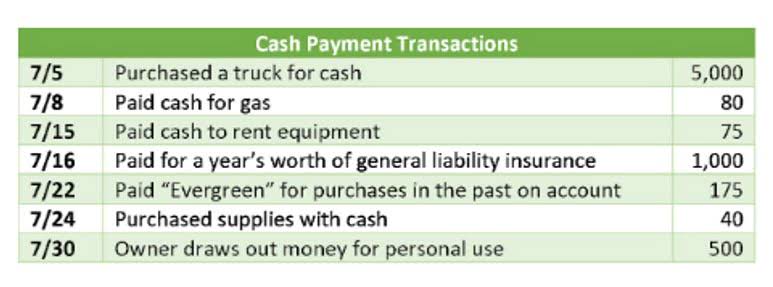Managing Restricted Net Assets in Nonprofit Accounting

Showing the net assets in this greater detail would help Org A’s board to understand why the organization has positive net assets but is still struggling to pay the bills on time. That is, the assets may be used by the organization for general expenses or any legitimate expenditure. Fund accounting involves recording and reporting an organization’s financial transactions based on the money received and the purpose for which it is stored or used. The accounting method is popular with NPOs because the organizations receive money and donations from various sources for various purposes. All the money/assets received are used or stored for different purposes in different funds, e.g., mission fund, growth fund, education fund, etc.

Liquidity And Availability Of Resources
- This category of net assets is less flexible but provides a stable financial foundation for the organization.
- Unrestricted net assets are often viewed as a measure of financial health, as they represent funds that can be used at the nonprofit’s discretion.
- Net assets were formerly presented as unrestricted, temporarily restricted, or permanently restricted.
- Fund Accounting is a central aspect of nonprofit accounting, where resources are categorized into funds based on restrictions imposed by donors or the board.
- The measure of operations excludes net investment return in excess of amounts made available for operations.
Securing this reserve for use in emergencies or simply when your budget falls short is critical Online Accounting to your organization’s security and long-term survival. It wouldn’t be fair to subtract fixed assets from the equation in step two if you didn’t get to add the related liabilities back in. Private sector companies, not for profit entities and public sector organizations or government bodies all carry out transactions with different types of restricted assets.
Reporting and Compliance
Learn effective strategies for managing restricted net assets in nonprofit accounting to ensure compliance and accurate financial reporting. A common misunderstanding that occurs is that the funds designated by the board are recording transactions temporarily restricted assets. Once in a while, the board of directors of an organization may set aside some funds for a specific purpose or program, building project or any other kind of investment, etc. Nonprofit organizations must adhere to strict standards for financial reporting and compliance to maintain transparency and accountability. The two crucial financial statements that play a vital role in this process are the Statement of Financial Position and the Statement of Activities. Creditors also consider unrestricted net assets when assessing an organization’s creditworthiness.
Net Assets Released from “With Donor Restrictions”

For a non-profit organization, what are unrestricted net assets there are three classifications of assets for the purpose of financial reporting. Committed Fund Balances Committed fund balance represents formal constraints that have been placed on resources within fund balance through formal action of the government’s highest decisionmaking authority. The creation of this type of constraint is evidenced by formal governing board actions (e.g., legislation, resolution, or ordinance) that can only be changed by an equivalent action. When transferring funds from restricted to unrestricted status, the journal entry should debit the restricted net assets and credit the unrestricted net assets. This reflects the satisfaction of the restriction, allowing the funds to be used for general purposes. Fund Accounting is a central aspect of nonprofit accounting, where resources are categorized into funds based on restrictions imposed by donors or the board.
Managing Donor-Imposed Restrictions
Understanding how to manage and report these assets is essential for maintaining financial health and transparency. Most of the organizations receive unrestricted revenues through donations, fees for services, investment income, ticket sales, or membership income. Through these funds, the organizations can pay off their current expenses as well as look around for other programs or projects that might exist. Restricted assets can be defined as any gift or donation received by a not-for-profit organization that comes with a legal restriction from the donor on what activities the said donation can be spent on. Restricted fund balance primarily represents those resources within fund balance for which constraints exist that cannot be changed or redirected by management. An operating reserve is an unrestricted and relatively liquid portion of a not-for-profit’s net assets.

For example, releasing a large sum of temporarily restricted net assets at the end of a fiscal year can significantly alter the organization’s financial position. It is important for financial managers to strategically plan these releases to align with the nonprofit’s financial goals and reporting periods. This strategic planning ensures that the organization can demonstrate effective use of funds while maintaining a stable financial outlook. When managing net assets released from restrictions, nonprofits must adhere to specific accounting practices to ensure transparency and accuracy. The process begins with recognizing when the https://www.bookstime.com/ conditions tied to temporarily restricted net assets have been met. This recognition is crucial as it triggers the reclassification of these funds from temporarily restricted to unrestricted net assets.
- When transferring funds from restricted to unrestricted status, the journal entry should debit the restricted net assets and credit the unrestricted net assets.
- On the other hand, unrestricted net assets are not subject to any specific restrictions and can be utilized at the discretion of the organization’s management.
- Establishing clear policies for the use and replenishment of reserve funds can ensure that they are available when most needed.
- This involves engaging with various departments within the organization to understand their financial requirements and aligning these needs with the nonprofit’s mission and objectives.
- These funds can be used to support professional development, improve working conditions, and invest in tools and technologies that enhance productivity.
For example, a donor might specify that their contribution be used for a particular program within the next fiscal year or for a capital project that will be completed over several years. The temporary nature of these restrictions requires careful tracking and reporting to ensure compliance with donor intentions. Organizations often use these funds to support targeted initiatives, such as research projects, scholarships, or community outreach programs. Proper management of temporarily restricted net assets is crucial for maintaining donor trust and ensuring that resources are used effectively.
: Bookkeeping | Tags:
Vous pouvez suivre les prochains commentaires à cet article grâce au flux RSS 2.0

 Service commercial : 01 80 88 43 02
Service commercial : 01 80 88 43 02
Répondre
Désolé vous devez être connecté pour publier un commentaire.